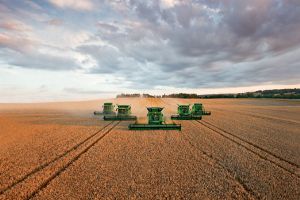USDA Reports Corn Production Increases with Global Population Growth

Corn Production in the United States
According to reports from the USDA, a combination of modern capabilities of soil preservation, a demand for ethanol, and the expanding global population are responsible for the increasing production and consumption of corn. The report claims that there is five times more corn being produced in American now than in 1930 and the corn is being grown on 20 percent less land than was available 82 years ago.
An overview of U.S. corn production revealed that corn made up 95.2 percent of all feed grain produced this year, followed by a small percentage of oats, barely, and sorghum. The U.S. devotes approximately 80 million acres to corn production, and while every state is equipped to grow corn, the majority comes from the heartland states. Despite the amount of land used for corn planting and harvesting, the USDA reports that the ability to produce a larger crop on less land is due to improvements in production practices. New technologies and innovations such as reduced tillage, crop rotation, irrigation, and pest management systems have reportedly helped preserve the soil and natural resources.
According to the USDA report, corn production has grown in recent years due to the population influx of Latin Americans and the global population as a whole. In future years, corn is expected to become increasingly used for food as population growth continues. The USDA claims, “Research is continuing to expand the various industrial uses for corn and corn byproducts.”
Based on the data provided in the USDA report, corn will maintain its position as the number one feed grain crop due to the increasingly high demand for food, fuel, industrial uses, and animal feed; the corn crop success will also rely on a continued preservation of soil, water, and other natural resources.